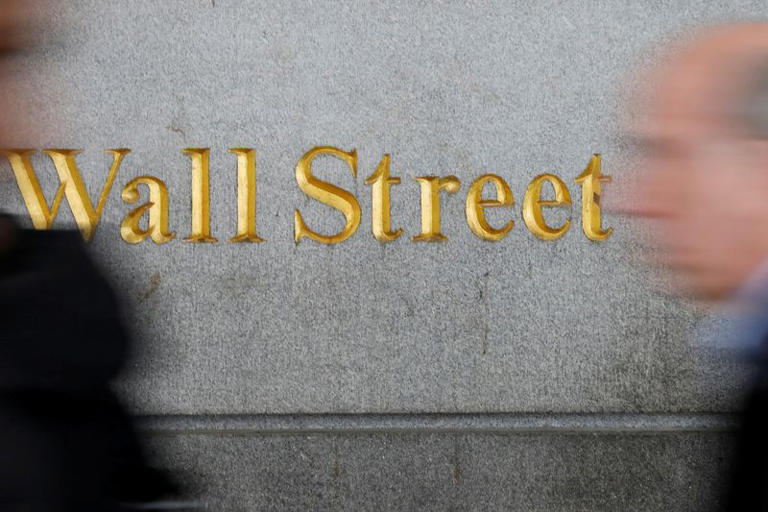Investors are currently placing significant emphasis on portfolio protection as they brace for what could be a challenging period for U.S. stocks. This heightened sense of caution is driven by a confluence of factors including political uncertainty, anticipated earnings reports from major tech companies, and seasonal market trends that traditionally usher in increased volatility.
The S&P 500, which has experienced a remarkable 17% increase this year, has largely benefited from advances in artificial intelligence and a gradual easing of inflationary pressures. This impressive gain has been accompanied by an unusually placid trading environment: the index has gone 355 sessions without a daily decline of 2% or more. This represents the longest such stretch of calm since 2007, highlighting the rare stability in recent years. However, this calm may be coming to an end, as recent data suggests increasing investor concern about future market volatility.
Recent activity in the options markets indicates a growing apprehension about potential market fluctuations. The Cboe Volatility Index (VIX), often referred to as Wall Street’s fear gauge, spiked to its highest level since late April last week. This surge followed a notable selloff in technology stocks, which resulted in the S&P 500 experiencing its second-largest weekly decline of the year. Although stocks rebounded on Monday, there are signs that investors are becoming more anxious about upcoming events, including earnings reports and political developments.
The tech sector, which has been a significant driver of market gains this year, is now facing increased scrutiny. Nvidia, a standout performer with a 138% rise in its stock price year-to-date, is no exception. The heightened caution is reflected in the options market, where the ratio of put options to call options reached 0.74-to-1 on Friday. This ratio, the most defensive it has been in approximately two months, underscores a shift towards more protective investment strategies.
Adding to the market’s uncertainty is the current political climate. President Joe Biden’s recent decision to end his reelection campaign and endorse Vice President Kamala Harris as the Democratic candidate for the upcoming presidential election introduces new dynamics into the market. The possibility of a return of former President Donald Trump to the White House has also fueled concerns. The VIX futures, which indicate expectations for future volatility, reflect increased apprehension around the U.S. presidential election. October VIX futures, which cover the period leading up to and including the election, are trading at the highest levels for any contract from August 2024 to January 2025.
The upcoming earnings reports from major technology companies, such as Tesla and Alphabet, are also poised to play a crucial role in market movements. Weaker-than-expected results from these tech giants could prompt investors to reallocate their funds from overvalued tech stocks into other sectors that have underperformed this year. This potential shift aligns with the so-called rotation trade, which saw a notable reversal last week. The Russell 2000, which focuses on smaller companies, gained 9% over the past ten sessions, while the tech-heavy Nasdaq 100 fell by 3% during the same period. This rotation reflects a broader trend where investors move their capital from high-flying technology stocks into other areas of the market.
The dominance of technology stocks this year has drawn comparisons to the dotcom bubble of the late 1990s, raising concerns about a possible market correction. Michael Thompson, co-portfolio manager at Little Harbor Advisors, noted that the extended period of gains driven by the AI theme might be due for a correction. This “mean reversion” refers to the market’s tendency to correct itself after prolonged periods of deviation from its historical norms.
Seasonal factors also contribute to the current market outlook. September and October are traditionally the most volatile months for U.S. stocks, with the VIX averaging 21.8 in October compared to its closing level of 14.9 on Monday. This heightened volatility is especially pronounced in election years, with the VIX reaching an average of 24.8 based on historical data from LSEG. Analysts at Deutsche Bank have suggested that a tighter and less predictable presidential race could further amplify market uncertainty and exert additional pressure on stock prices.
Investors who have tailored their strategies based on the assumption of continued low volatility may face challenges if the market environment shifts. One such strategy is the dispersion trade, which capitalizes on the difference between index-level volatility and the volatility of individual stocks. However, Kris Sidial of the Ambrus Group indicated that significant adjustments to this strategy would only occur if the VIX rises substantially above current levels, specifically into the high 20s.
As the market navigates these complexities, investors are adjusting their strategies to both safeguard their portfolios and position themselves for potential opportunities that may arise from changing economic and political conditions.
